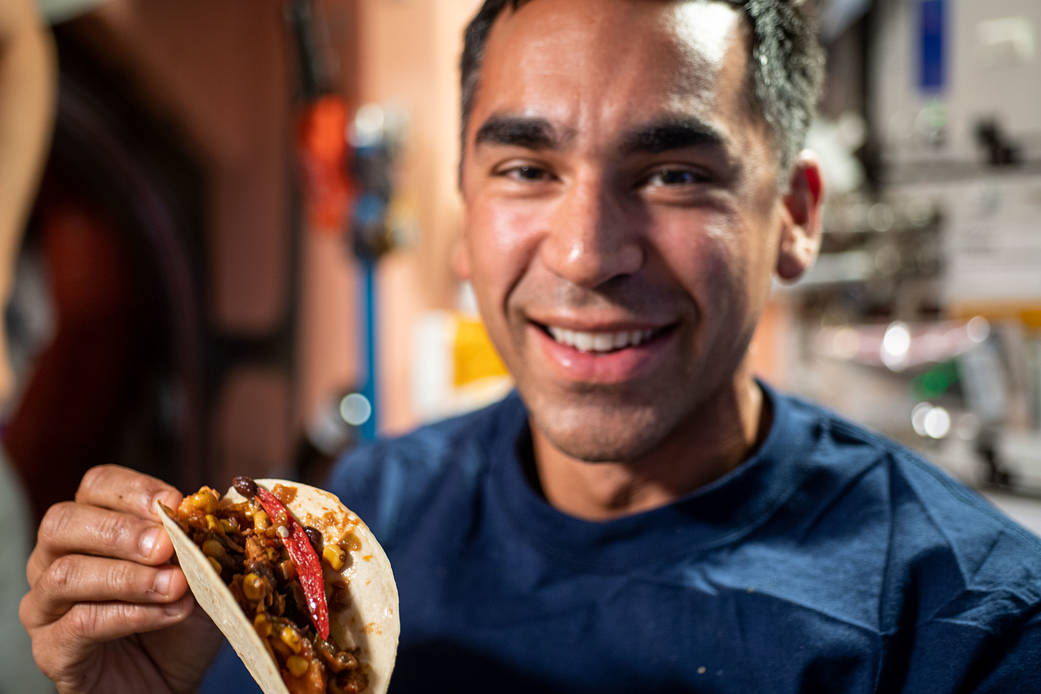宇航员拉贾·查里为塔可之夜做好准备
Taco Night on the International Space Station had a little kick to it on Nov. 26, 2021. In this image taken by NASA astronaut Kayla Barron, fellow NASA astronaut and Expedition 66 flight engineer Raja Chari smiles as he shows off a taco that includes fresh chile peppers.
The peppers were harvested from inside the International Space Station’s Advanced Plant Habitat, which started growing four months prior as part of the Plant Habitat-04 experiment. Astronauts on station and a team of researchers at Kennedy worked together to check the peppers’ growth. This was one of the longest and most challenging plant experiments tried aboard the orbital lab.
Starting in late 2015 and going into early 2016, astronauts grew zinnias on station – a precursor to growing longer-duration, fruit-bearing, flowering crops like peppers. Researchers spent two years evaluating more than two dozen pepper varieties from around the world. They narrowed it down and selected the NuMex ‘Española Improved’ pepper, a hybrid Hatch pepper, the generic name for several varieties of chiles from Hatch, New Mexico, and the Hatch Valley in southern New Mexico. This pepper performed well in testing and had the makings of a viable space crop.
Image Credit: NASA/Kayla Barron
2021年11月26日,国际空间站的塔可之夜有点热闹。在这张由NASA宇航员凯拉·巴伦拍摄的照片中,NASA宇航员兼第66号远征队飞行工程师拉贾·查理微笑着展示了一个包含新鲜辣椒的塔可。
这些辣椒是从国际空间站的高级植物栖息地收获的,作为植物栖息地-04实验的一部分,它在四个月前开始生长。空间站上的宇航员和肯尼迪研究中心的一组研究人员一起检查辣椒的生长情况。这是在轨道实验室进行的最长、最具挑战性的植物实验之一。
从2015年末到2016年初,宇航员在空间站种植百日菊——这是种植持续时间更长、结果实、开花作物(如辣椒)的先驱。研究人员花了两年时间评估了来自世界各地的二十多种辣椒品种。他们缩小了范围,选择了NuMex的西班牙改良辣椒,这是一种哈奇辣椒的杂交品种,哈奇辣椒是新墨西哥州哈奇和新墨西哥州南部哈奇山谷几种辣椒的总称。这种辣椒在测试中表现良好,具备可行的太空作物的素质。
影像来源:NASA/Kayla Barron

